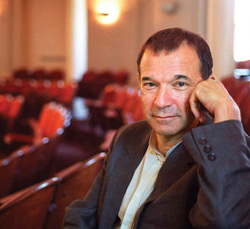The basic strategy is for them to mark up the modern English language side of the text as they would normally, and then look at the Anglo-Saxon in the lines that correspond with the modern English lines that they find interesting. After discovering a selection of Anglo-Saxon words that they find interesting, they look them up and put some pressure on their translator.
Because this is pretty challenging, I offer an alternate assignment wherein students can compare and contrast modern translations; however, this assignment is less popular, because students inevitably want to know which translator got it "better," so they end up going to the Bosworth-Toller anyway. What can I say? I am a pretty sneaky teacher.
Like the Oxford English Dictionary (OED), the Bosworth-Toller Online offers examples of the word in context. This helps students to locate the primary meaning; however, students are quick to discover that there are often multiple possible meanings. For example, one student found in her research that the Anglo-Saxon word un-nyt, which Seamus Heaney translates as useless, could also mean harmful. She argued that Heaney’s translation obscures the narrator’s increasingly critical view about gold over the course of the poem, culminating in a pun at the end when the narrator declares that gold is un-nyt to man.
 Greenblatt, thinking about ghosts
Greenblatt, thinking about ghosts The Close Reading Assignment:
In a close-reading exercise, you are expected to make an argument about a text by drawing attention to textual evidence. The close-reading paper is not a theory-based paper, nor is it a paper based on historical research; rather, your evidence will be based on the structure of the poem, the literary devices that an authors uses to produce a certain response, and the connotations of the author’s diction.
In the last instance, you will need to use a reliable dictionary as a tool. Because Beowulf is an Anglo-Saxon poem that we are reading in translation, you will have to go an extra step in order to be a word detective. Either 1) find a version of the poem in Anglo-Saxon, such as Seamus Heaney’s dual-page bilingual edition or the digital bilingual edition, which is maintained by Benjamin Slade and uses the Klaeber translation, and then use the Bosworth-Toller Anglo-Saxon Dictionary as your dictionary, or 2) find another modern translation of the poem, such as Burton Raffel’s edition, and use the OED to discuss the differences between the two translations. Although your argument does not need to hinge on diction, I expect that everyone in the class will demonstrate the ability to do sophisticated philological research.
Choose one of the following prompts:
1. How does Beowulf grow over the course of the poem, if at all? Trace his response to the three monsters and see if he develops as a character or remains statically good in opposition to the evil that he faces. Consider the implications of your argument.
2. Focus on a single monster that Beowulf faces. What kind of monster emerges? How does facing this particular monster make Beowulf a good man? Does the monster stand for something larger than itself; that is, is the monster an allegory or a symbol for either a social ill or a sin that Beowulf must conquer? How do you know?
3. Why does Beowulf have to fight Grendel’s mother in the poem? In other words, why does the poet insist on her female gender? How does her maternity add to the poem? How does she compare to other mothers or wives in the poem?
4. What is the status of gold and gift-giving in the poem? Does this change over the course of the poem? Are the modern concepts of wealth, payment, monetary worth and greed appropriate for the world of Beowulf?
5. Why are there so many stories-within-the-story in the poem? What is the relation between these so-called “digressions” and the main narrative in Beowulf? For this prompt you may focus on one digression to consider why it is particularly important for the poem.
You may develop your own prompt to this paper if there is something you want to explore.



 RSS Feed
RSS Feed